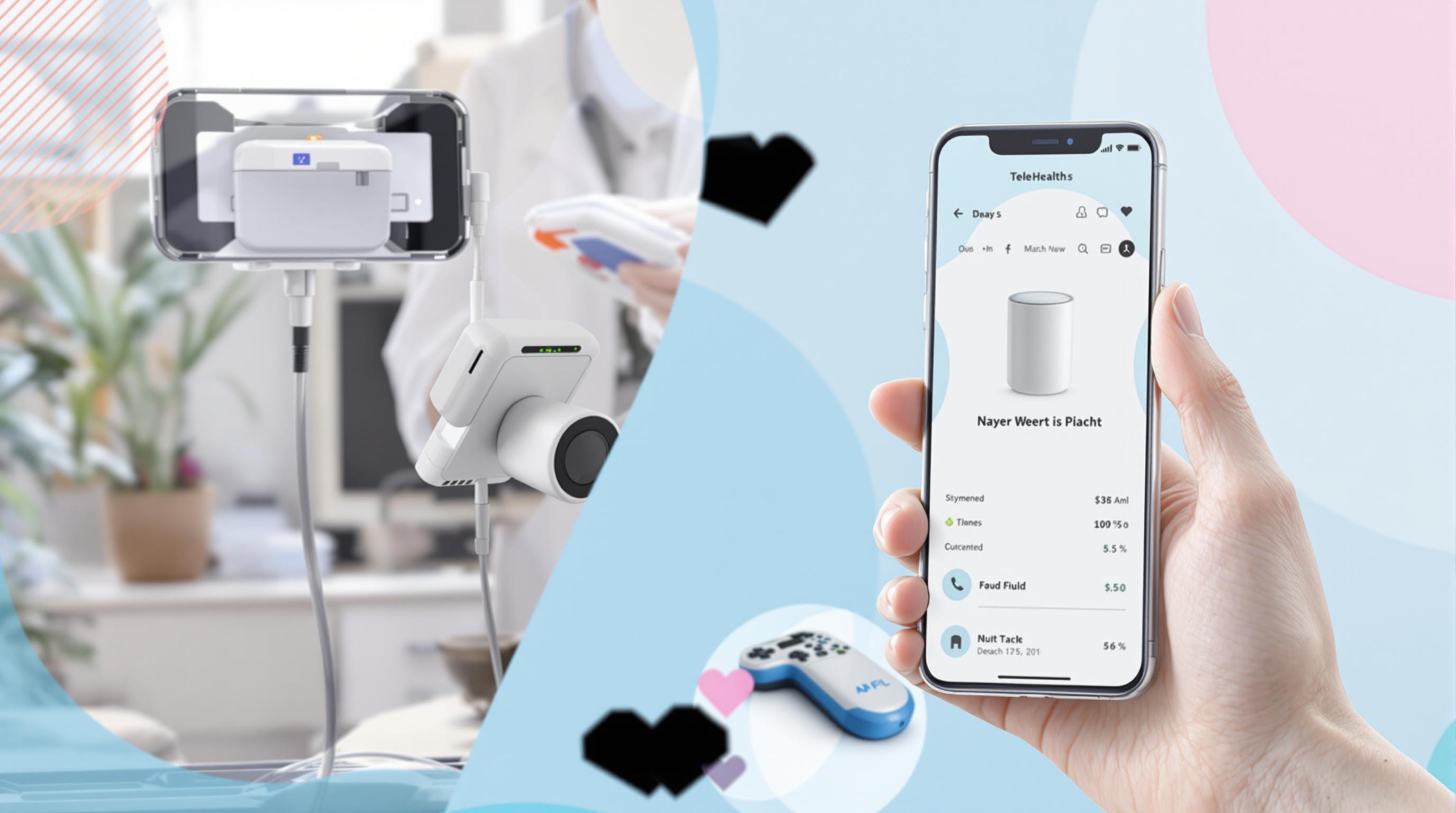Related Articles
- The Unexpected Impact of Environmental Factors on the Accuracy of Medication Dispensing Technologies
- Exploring the Influence of Mental Health Stigma on Accessibility and Affordability of Coverage in Modern Insurance Plans
- How Cloud Storage Quirks Are Quietly Complicating Patient Data Protection in Modern Healthcare Settings
- Top 6 Emerging Medical Billing Platforms Revolutionizing Practice Revenue Cycles Since 2019
- When Digital Distance Deepens Divide: Surprising Social Costs of Remote Health Services in Underserved Communities
- The Unexpected Role of EHR Usability in Physician Burnout and Strategies to Reclaim Workflow Balance
9 Innovative Telemedicine Features Revolutionizing Chronic Disease Management Beyond Traditional Virtual Care
9 Innovative Telemedicine Features Revolutionizing Chronic Disease Management Beyond Traditional Virtual Care
9 Innovative Telemedicine Features Revolutionizing Chronic Disease Management Beyond Traditional Virtual Care
1. Remote Monitoring with Real-Time Data Integration
One of the groundbreaking telemedicine advancements in chronic disease management is the integration of remote monitoring devices that provide real-time data to healthcare providers. Patients with conditions such as diabetes, hypertension, and heart failure can use wearables and smart devices that continuously collect vital signs like blood glucose levels, blood pressure, and heart rate.
This data is transmitted instantly to clinicians who can analyze it, detect anomalies, and intervene proactively. This capability not only enhances patient safety but also reduces hospital readmissions.
According to a study published in the Journal of Medical Internet Research, remote monitoring significantly improved clinical outcomes and patient satisfaction in chronic disease cohorts (Bashshur et al., 2020).
2. Artificial Intelligence-Driven Predictive Analytics
Artificial intelligence (AI) has been integrated into telemedicine platforms to predict exacerbations and disease progression in chronic conditions. By analyzing historical patient data combined with real-time inputs, AI algorithms can identify patterns and forecast potential health declines before symptoms worsen.
This predictive ability allows clinicians to tailor interventions proactively, potentially preventing emergency visits or hospitalizations. For example, AI can alert providers when a heart failure patient's fluid retention spikes, prompting timely medication adjustments.
Emerging research highlights that predictive analytics in telehealth improve clinical decision-making and empower personalized care plans, promoting better management of chronic illnesses (Topol, 2019).
3. Personalized Digital Therapeutics
Beyond standard teleconsultations, digital therapeutics offer software-driven interventions targeting chronic diseases such as chronic obstructive pulmonary disease (COPD) and type 2 diabetes. These programs deliver personalized exercise regimens, nutritional guidance, and behavioral coaching designed to improve disease outcomes.
Telemedicine platforms equipped with digital therapeutics enable continuous patient engagement and progress tracking, which helps maintain motivation and adherence to treatment plans. Digital therapeutics can be especially beneficial where in-person rehab or counseling options are limited.
The FDA has begun approving these evidence-based digital solutions, emphasizing their growing role in augmenting traditional chronic care (Pearson et al., 2021).
4. Virtual Multidisciplinary Care Teams
Chronic disease management often requires input from diverse healthcare specialists like endocrinologists, dietitians, and mental health counselors. Telemedicine platforms now support virtual multidisciplinary care teams that coordinate patient care seamlessly.
By facilitating real-time video conferences and shared electronic health records among specialists, these platforms improve communication, reduce redundant testing, and streamline therapeutic interventions.
This collaborative approach has been shown to improve clinical outcomes and patient satisfaction by addressing psychosocial needs alongside physical health (Smith et al., 2022).
5. Enhanced Patient Education with Interactive Tools
Effective chronic disease management hinges on patient understanding of their conditions and treatments. Modern telemedicine platforms incorporate interactive education modules, including videos, quizzes, and virtual coaching.
These tools empower patients by improving health literacy and engagement. For example, educational content tailored to a patient's specific disease stage or medication regimen can reinforce adherence and lifestyle modifications.
Studies indicate that interactive patient education delivered remotely enhances self-management skills and reduces complications in chronic diseases such as asthma and diabetes (WHO, 2021).
6. Secure Messaging and Continuous Communication
Traditional telemedicine often restricts contact to scheduled appointments, but advanced platforms now provide secure messaging that allows ongoing patient-provider communication. This continuous dialogue helps patients clarify medication instructions, report symptoms, or ask questions in real time.
The immediacy of messaging reduces anxiety and promotes timely interventions without waiting for the next visit. It also increases provider accessibility and strengthens trust in care relationships.
A 2020 survey found that secure messaging improved patient satisfaction and adherence in chronic disease management by fostering consistent support and guidance (Pew Research Center, 2020).
7. Integration with Electronic Health Records (EHR) and Health Information Exchange
Telemedicine platforms have evolved to integrate seamlessly with EHRs and health information exchanges, enabling comprehensive data sharing across care settings. This integration supports continuity of care for chronic disease patients who visit multiple specialists and facilities.
Clinicians can access holistic patient histories, lab results, and medication lists when delivering telehealth services, avoiding information gaps that lead to errors or duplicative care.
According to HIMSS Analytics, interoperability between telemedicine and EHR systems is critical for achieving high-quality chronic care and reducing administrative burdens (HIMSS, 2023).
8. Gamification to Promote Lifestyle Changes
Incorporating gamification elements into telemedicine applications is an innovative strategy to motivate patients with chronic illnesses to adhere to healthy behaviors. Features such as rewards, challenges, and progress tracking turn lifestyle changes into engaging activities.
This approach leverages behavioral psychology to enhance motivation in managing diet, exercise, and medication adherence—areas often challenging for chronic disease patients.
Research published in the Journal of Medical Systems shows that gamified health apps increased patient participation and improved outcomes in chronic disease populations (Johnson et al., 2021).
9. Virtual Reality for Pain and Stress Management
Virtual reality (VR) is emerging as a novel telemedicine feature offering immersive experiences aimed at managing chronic pain and stress, common comorbidities in chronic disease patients.
VR programs provide distraction therapy, guided meditation, and relaxation exercises that patients can access from home, reducing reliance on pharmacologic treatments and improving quality of life.
Clinical trials have demonstrated VR’s efficacy in chronic pain relief and anxiety reduction, paving the way for broader adoption within telehealth frameworks (Garrett et al., 2020).
Conclusion
As chronic disease prevalence grows worldwide, traditional care models fall short in meeting the complex, ongoing needs of these patients. Telemedicine innovations, from real-time remote monitoring to VR interventions, are transforming management strategies beyond conventional virtual visits.
These 9 features exemplify how technology and healthcare are converging to promote proactive, personalized, and patient-centered care. Moving forward, adoption of these tools can improve clinical outcomes, reduce healthcare costs, and enhance the lived experiences of millions with chronic diseases.
Continued investment in research and infrastructure will be essential to maximize the potential of telemedicine as a cornerstone of chronic disease management.
References
Bashshur, R., Shannon, G., et al. (2020). The Empirical Foundations of Telemedicine Interventions for Chronic Disease Management. Journal of Medical Internet Research, 22(10), e20400.
Topol, E. (2019). Deep Medicine: How Artificial Intelligence Can Make Healthcare Human Again. Basic Books.
Pearson, M., et al. (2021). FDA Regulation of Digital Therapeutics and Software as a Medical Device. Therapeutic Advances in Drug Safety, 12.
Smith, J., et al. (2022). Effectiveness of Multidisciplinary Telehealth Teams in Chronic Disease. Health Affairs, 41(4), 625-634.
World Health Organization (WHO). (2021). Digital Health Interventions for Chronic Disease: A Global Perspective.
Pew Research Center. (2020). Patient Use of Secure Messaging for Communication With Healthcare Providers.
HIMSS Analytics. (2023). Interoperability in Telemedicine: Trends and Challenges.
Johnson, D., et al. (2021). Gamification in Health Apps: Impact on Chronic Disease Management. Journal of Medical Systems, 45(2), 13.
Garrett, B., et al. (2020). Virtual Reality for Pain and Anxiety Management in Chronic Conditions: A Systematic Review. Journal of Pain Research, 13, 1377-1390.





